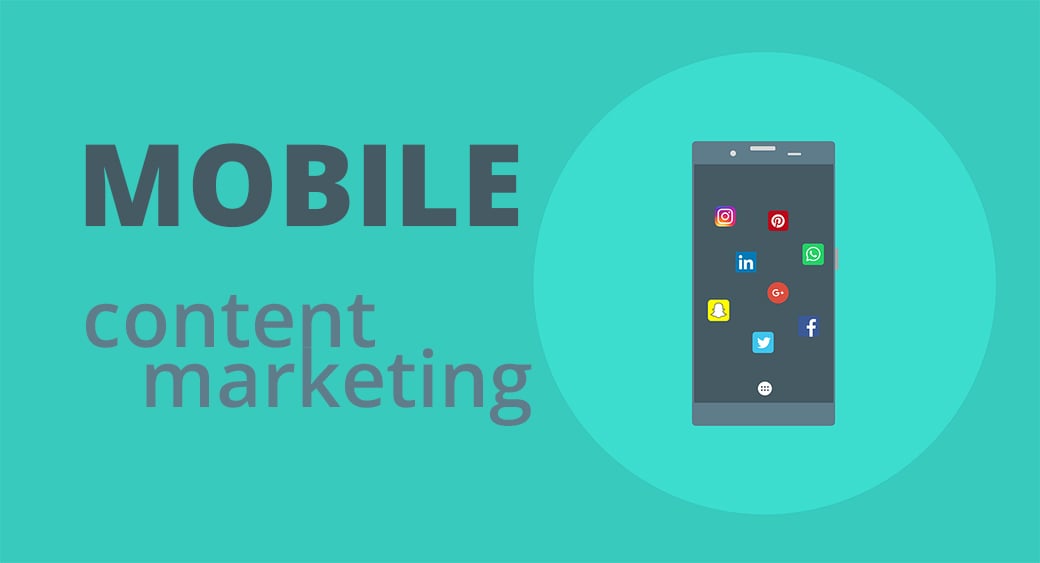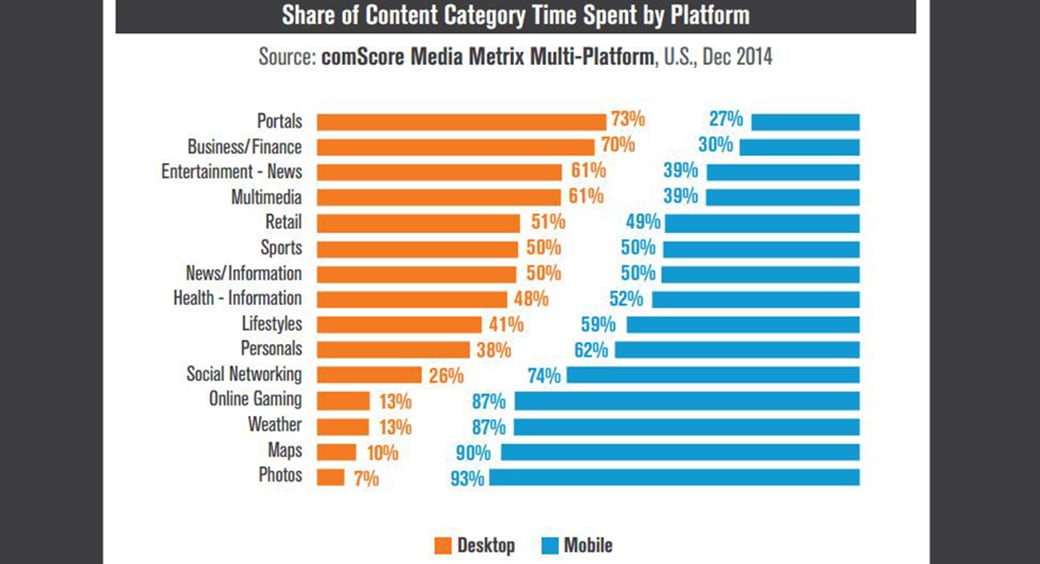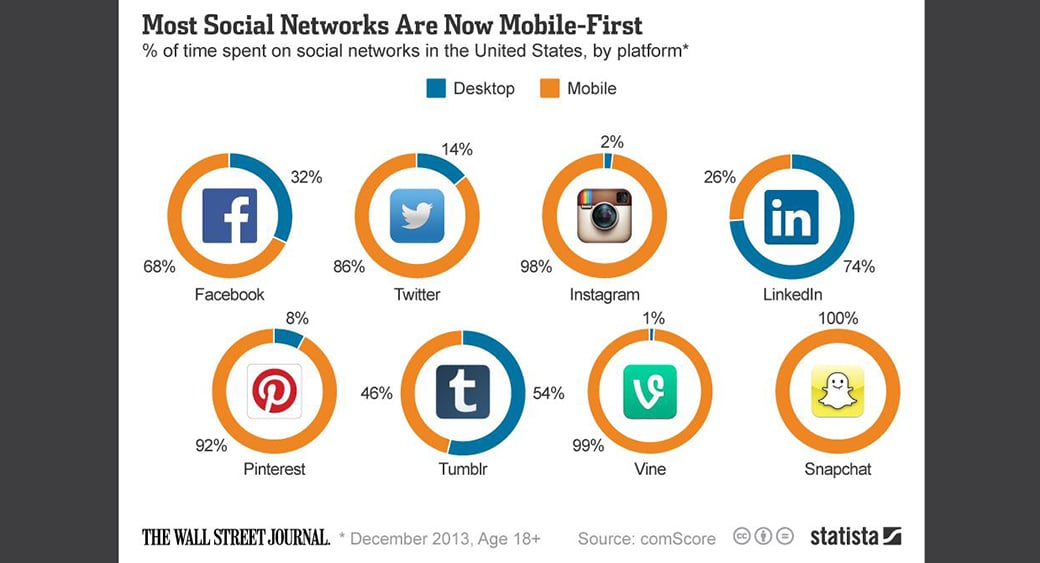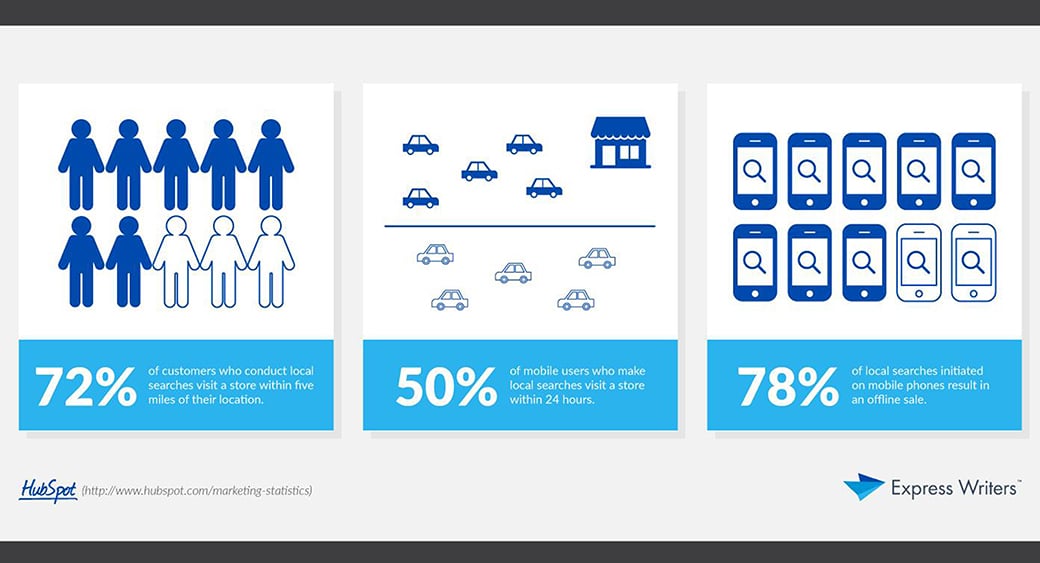Mobile Content Marketing: How Differs from Desktop Content Marketing
A few years ago, desktop screens dominated the digital marketing landscape. But then a seismic shift created a new main screen; the screen being your mobile device. Therefore, most business owners faced the necessity of a well-planned mobile content marketing.

Stats reveal that mobile internet usage dominates desktop usage. Going by the US internet traffic data, there are about 55.79% mobile users and 44.21% desktop users. This key stat is a strong indicator of our device preferences, but only when seen in isolation.
While the dependence on mobile has increased, the desktop still has better retention rate. If one looks at the time spent on website and bounce rate metrics, desktop emerges as the winner. This points out to a fundamental difference in user behavior on different devices.
With a large chunk of users shifting to mobile, it makes sense to count mobile as the main screen when creating your marketing strategies. But to do that, you must first understand the desktop versus mobile structure.
Target audience differs based on the device being used
Mobile devices are largely used when your users are on the move, because of the ease of use. However, this is not true for desktops. And this basic dissimilarity invites a contrast in user behavior. This contrast is responsible for higher bounce rates and less time spent on websites.
When a user accesses a website through his mobile, the intent is usually to consume information through short-form content because time availability while a person is on the move, is less. So mobile content marketing needs to focus on delivering the core message in a crisp time frame.
On the other hand, for desktop users, (comparatively) long-form content can work because of the time factor. This especially holds true for businesses operating in the business, finance and entertainment sector.

But when one shifts towards the gaming, social networking sectors, this preference shifts and the preferred device also changes.
For marketers, this means that they need to create more space for visual communication in their mobile content marketing plan than in their desktop content for quick engagement.
Voice search in mobiles creates a difference in search behavior
Another key difference in the way users access content on mobile and desktop lies in the way they put their queries in the search box. For a desktop user, two different questions result in two separate queries. In fact, websites tend to lose the visitor because the user goes back to the search box to type the next question.
But because of the voice search in mobiles, those two queries can be consolidated into one. So for those looking to optimize their mobile content marketing efforts, it is crucial to focus on creating content that doesn’t just provide the answer to a single query but a series of similar queries. This way, the efforts of both the user and the website are reduced and mobile experience is enhanced.
Social media on mobile is different than social media on a desktop
The mobile advertising landscape is much more fruitful than desktop especially when social media comes into the picture.

In fact, the advertising revenue differs vastly when desktop and mobile are compared. For Facebook, mobile share in the revenue is 73% and this figure goes up to a whopping figure of 89% for Twitter. The stats also go on to reveal that Facebook mobile ads outperform desktop ads in terms of click-through rates by 187%.
For those optimizing social experience on mobile, these figures indicate the need to invest in the mobile social media optimization of their social content. Since social mobile advertising consumption is high, marketers need to give their digital marketing strategy a ‘mobile’ makeover.
This mobile makeover could mean that you choose a vertical format (since it is more mobile-friendly) for your social videos and video mobile ads and also optimize these for social viewing by focusing on creating content that delivers the information without relying on sound. Around 85% of Facebook video viewing happens with the sound turned off. And this is a more prevalent behavior in the mobile audience as compared to desktop users.
Reliance on mobiles for local answers requires mobile content marketing to be local-centric
Most local searches happen on a mobile device. In fact, 50% local store information is gained through a mobile search query. And this is why optimizing your mobile content marketing strategy for ‘local’ queries is a necessity than an option.

To gain benefits from your mobile content marketing strategy, it then makes sense to beef your content with ‘locally rich’ data. From targeted local keywords to embedding Google maps, local SEO optimization can help you gain better visibility in the search results. Additionally, with Google giving a push to local content, this local optimization can boost your online presence.
Also, when we dig a little deeper, optimizing for local content means that there needs to be a focus on voice search optimization. Voice search provides instant answers to our urgent needs without any need to type. So voice and local search is a good combination.
This also points to the necessity of optimizing your local business for voice search.
Quick Wrap
The differences in mobile content marketing and desktop content marketing stem from the nature of the devices, the features that distinguish the online experience on them and the variation in user behavior on these digital instruments. But even though mobile usage has surpassed desktop usage, the quality of these interactions is higher on the desktop. So while it is important to enhance user experience on mobile through content optimization, it is equally important to not forget that desktop interactions cannot be ignored.




Leave a Reply